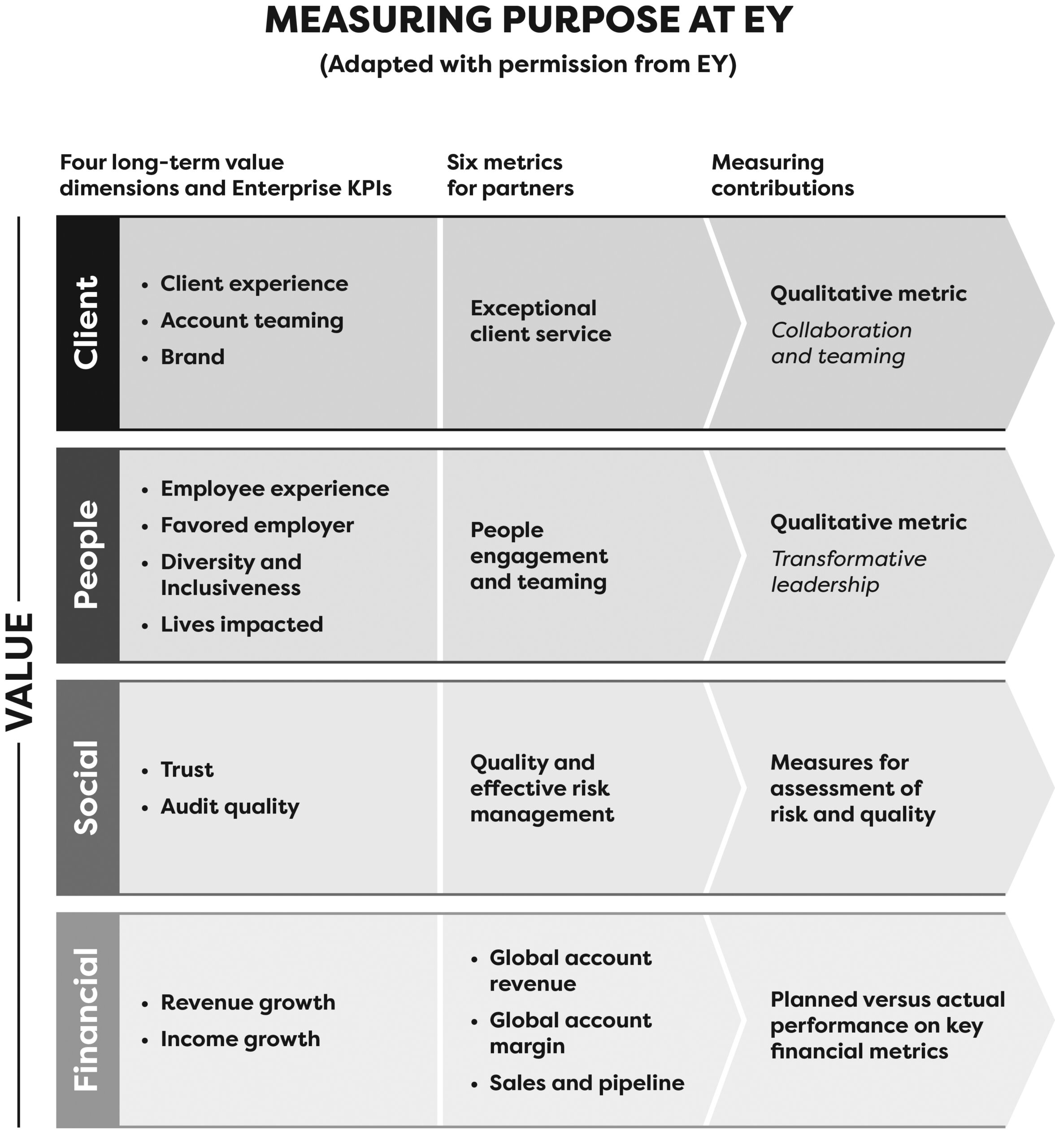One of the most sophisticated methods I’ve encountered for measuring end-state outcomes linked to purpose was at the EY organization (leave it to the accountants to lead in this area). Defining their purpose as “building a better working world,” the company linked it to an “ambition,” the provision of “long-term value as the world’s most trusted, distinctive, professional services organization.” This emphasis on long-term value is critical, highlighting one of the most important features of purpose as a fundamental orientation towards business.
EY teams in turn defined four kinds of long-term value linked to different stakeholder groups and Environmental Social and Governance (ESG) issues: client value (customers), people value (employees), social value (communities and the planet), and financial value (EY’s partners). To measure purpose, EY teams measure outcomes across these four forms of value, using ten core metrics. These metrics in turn link up with an additional set of behavioral metrics that allow EY’s partners to track their own performance relative to the four kinds of value, and in turn, the purpose. EY teams have used these metrics to set ambitious and concrete goals, track annual progress, and reward partners. The organization has also sought to map internal goals to more conventional ESG measures.
As Carmine Di Sibio, global chairman and CEO of EY, told me, metrics help because they demonstrate to external stakeholders, including potential collaborators and employees, that the company is serious about purpose. “Companies really have to be able to show what they’re doing. They get into trouble when they talk a lot about purpose and it’s just talk, and what do you really have to show for it in terms of results.” Metrics and incentives also help ensure that employees deliver on the purpose. “You’ve got to measure the outcomes and you’ve got to measure how you’re doing vis-à-vis strategy and if your strategy is long-term value oriented, then if you don’t measure it there’s no motivation to get there.” The following figure summarizes the metrics and specific goals associated with the four types of value.

Ultimately, purpose speaks to what some have termed the “human dimension” of business. And as one observer points out, “At least some of that dimension will always be difficult for chief executives to collect, crunch and codify on their digital dashboards. As a result, they must resolve to try harder to manage the things they will never easily measure.” In their enthusiasm and dedication to a reason for being, deep purpose leaders make that effort, finding new ways to quantify the organization’s pursuit of its existential intent.
Contributed to Branding Strategy Insider by: Ranjay Gulati and excerpted from his book DEEP PURPOSE. Copyright © 2022 by Ranjay Gulati.
Shared here with permission from Harper Business, an imprint of HarperCollins Publishers
The Blake Project can help you define and develop your brand purpose.
Branding Strategy Insider is a service of The Blake Project: A strategic brand consultancy specializing in Brand Research, Brand Strategy, Brand Growth and Brand Education




